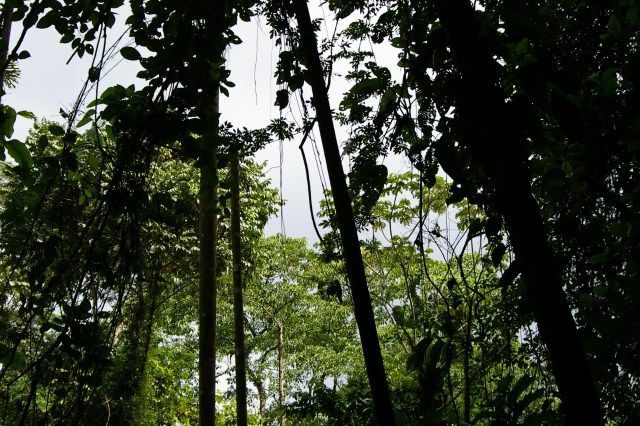One of the most interesting places that we visited during our time in Bolivia was to the Carrasco National Park. It is in the Amazon Rainforest and is most famous for having a cave with Guacharo birds. These birds are virtually blind and are nocturnal feeders that eat the fruit of the oil palm trees. They are also known as “blind birds” or “oil birds” because of their unique eating habits as they are the only nocturnal fruit eating birds in the world that fly. Needless to say, there are a lot of other animals that can be found in the park and hiking through the park provides a variety of unique experiences.



Prior to starting our guided tour of the park, our guide took time to show us a variety of venomous snakes that could be encountered, which was certainly a little unnerving. We would learn, however, that there are a lot of other things to be cautious of when hiking in the jungle, such as poisonous ants, spiders, and frogs. There are even jaguars that remain in the jungle, but they are very rarely sighted, but that doesn’t mean that they don’t see you. After our preparation talk, the guide led us to the edge of a river, which he then crossed using a pulley in order to reach a cable car that he then pulled back over to transport us across the river. Certainly an interesting start to our adventure.



We then hiked through the jungle on a slightly overgrown trail with our guide hacking leaves out of our way with a machete. Just seeing the overgrowth on a trail helps explain why so much of the Amazon remains unexplored even to this day. Once we reached the cave with the blind birds, we entered quietly trying to see them huddled together on ledges near the roof. You aren’t able to get close enough to really see them, but then our guide hit a stick against the cave wall making a banging sound. In response, the birds howled back making a sound that resembles the roar of a jaguar. In fact, when the birds were first discovered by the local tribes, no one dared enter the cave as they feared that there was a jaguar inside and only later did they find out that the noise was from these strange birds.



We weren’t done exploring caves, though, as we would next enter two other caves to see different types of bats, including vampire bats. From there we continued to loop around the trail towards the entrance. At one point, our guide put his finger on the trunk of a tree and quickly pulled it away, but not before hundreds of tiny ants appeared from under the bark. There are no leaves or branches on the lower part of the trees and our guide explained that it was due to these poisonous ants. The locals will still tie a person convicted of a crime such as rape or incest to the trunk of the trees and thousands of ants will bite them until they die. Definitely a gruesome punishment.



We saw so many fascinating things during our hike that it is hard to describe them all. There are trees that are called “walking trees” because they grow multiple, above-ground roots and they will grow new roots to literally move to find more sunlight. Obviously they don’t really walk, but over time, they can move themselves several feet from their original location. There is also a form of tree vine that grows itself around other trees, eventually overtaking its host. The park is definitely host to many beautiful as well as dangerous things, but one of the things that can be found in the park was somewhat surprising. Unfortunately, the pro-cocaine government has allowed coca farms to claim lands within the park and at one point we actually walked through one of the farms, our guide whistling loudly to announce our presence.



If you want to get an understanding of the diversity of life on the floor of the Amazon, visiting Carrasco National Park will provide you with the perfect experience. This was our first visit into the jungle and we enjoyed it so much that we made sure to spend more time in the jungle during our trip to Ecuador. Hopefully at some point, the government of Bolivia will truly protect these parks or they won’t be around for people in the future.

















